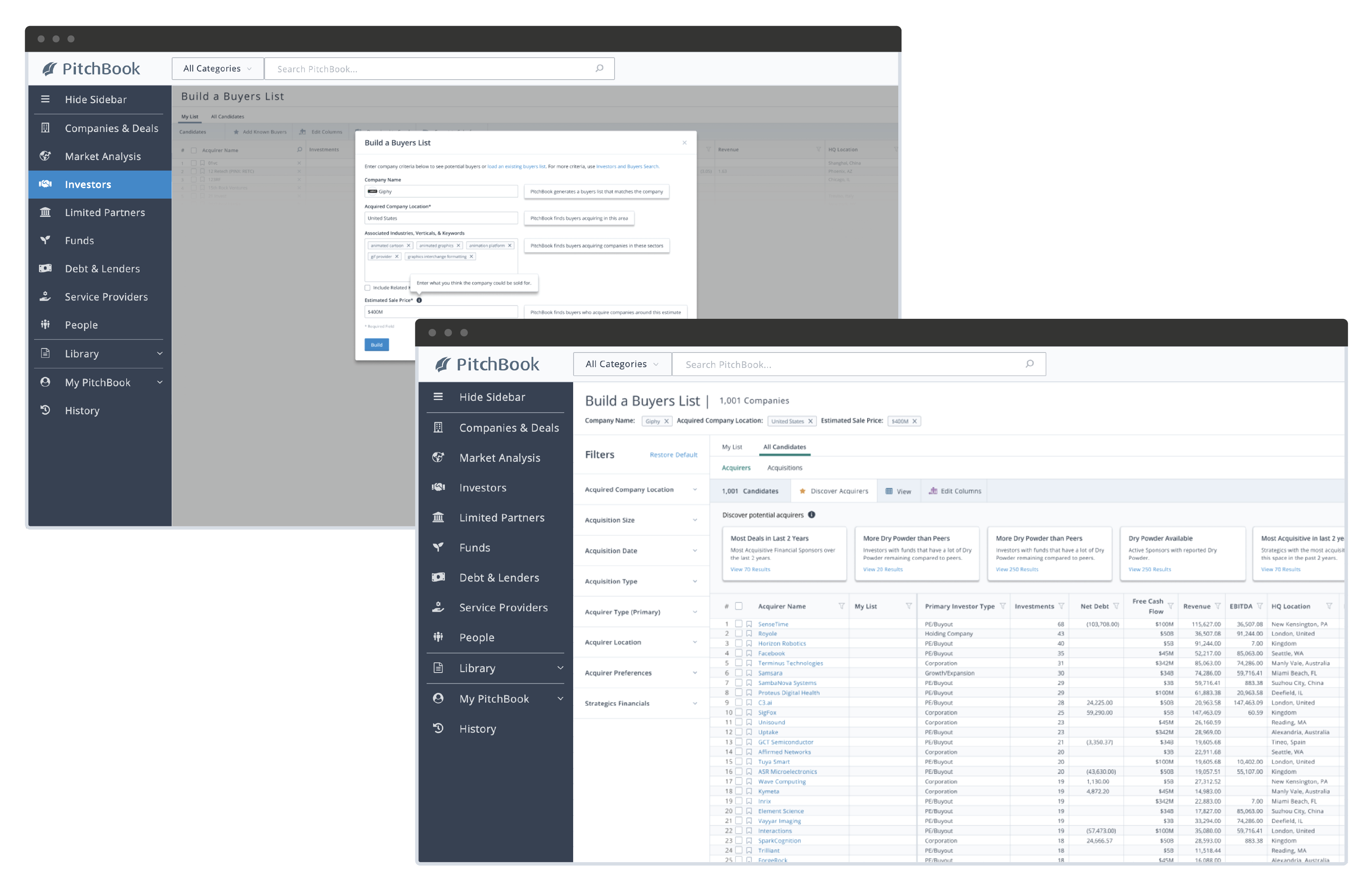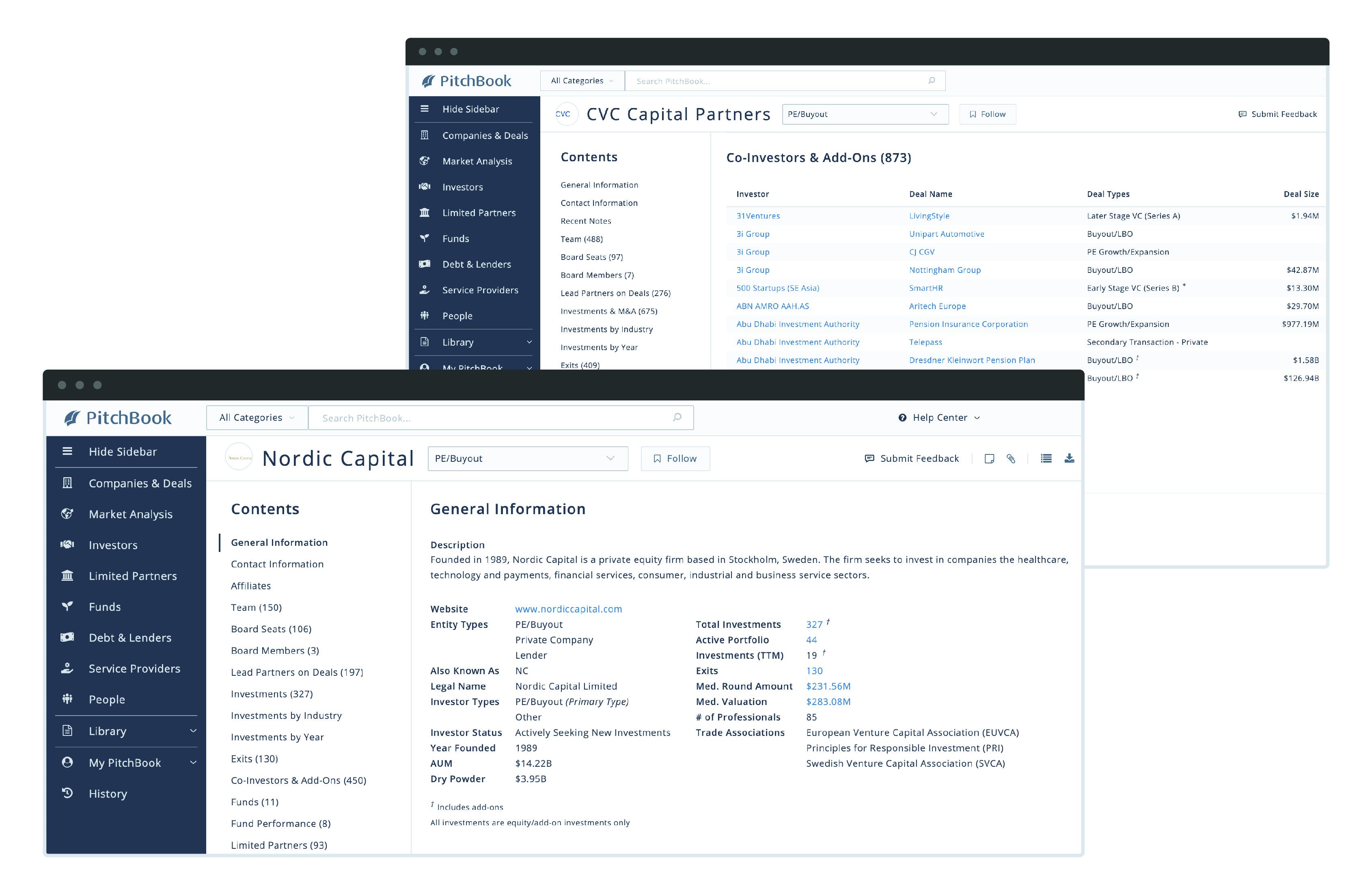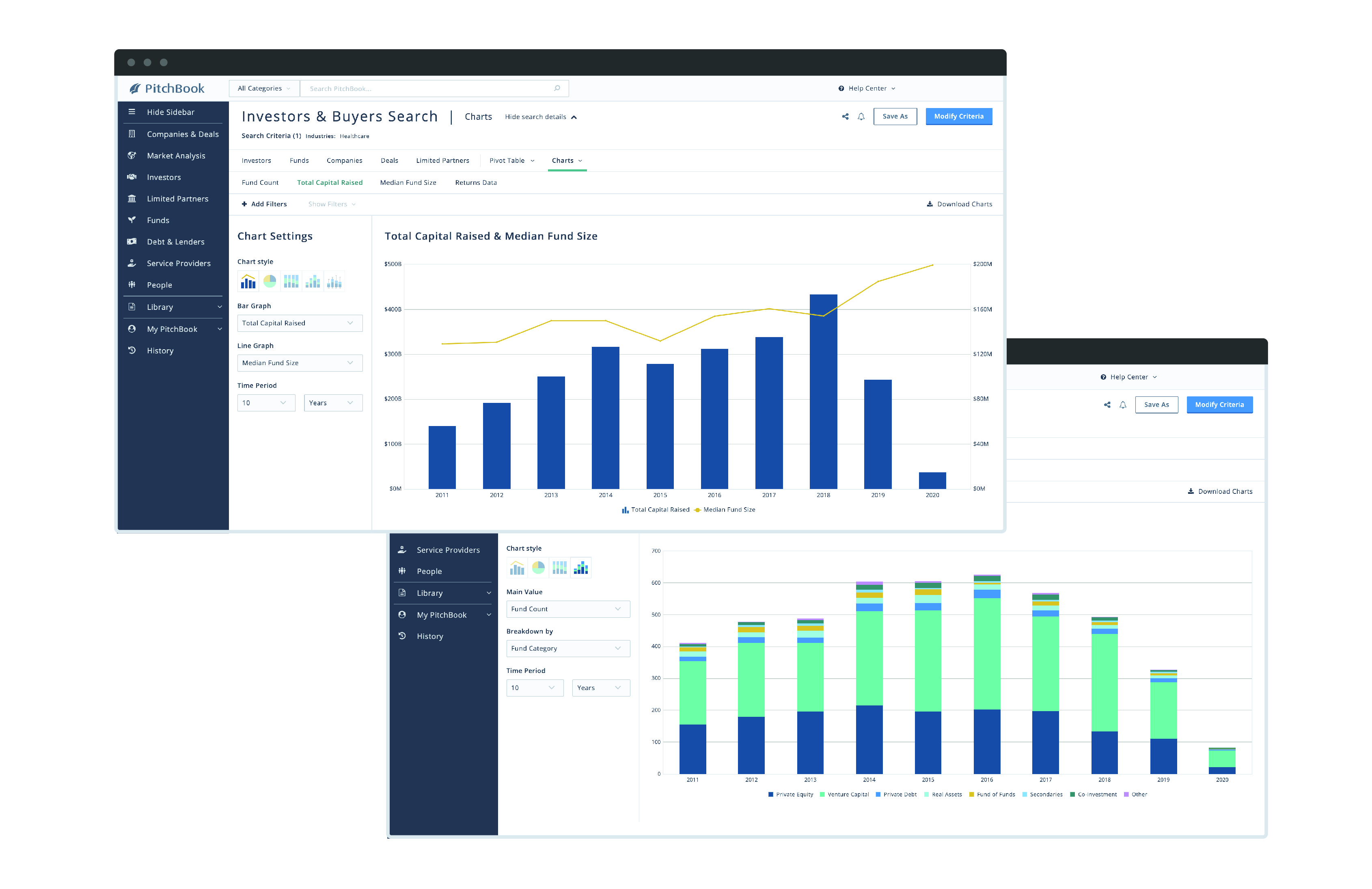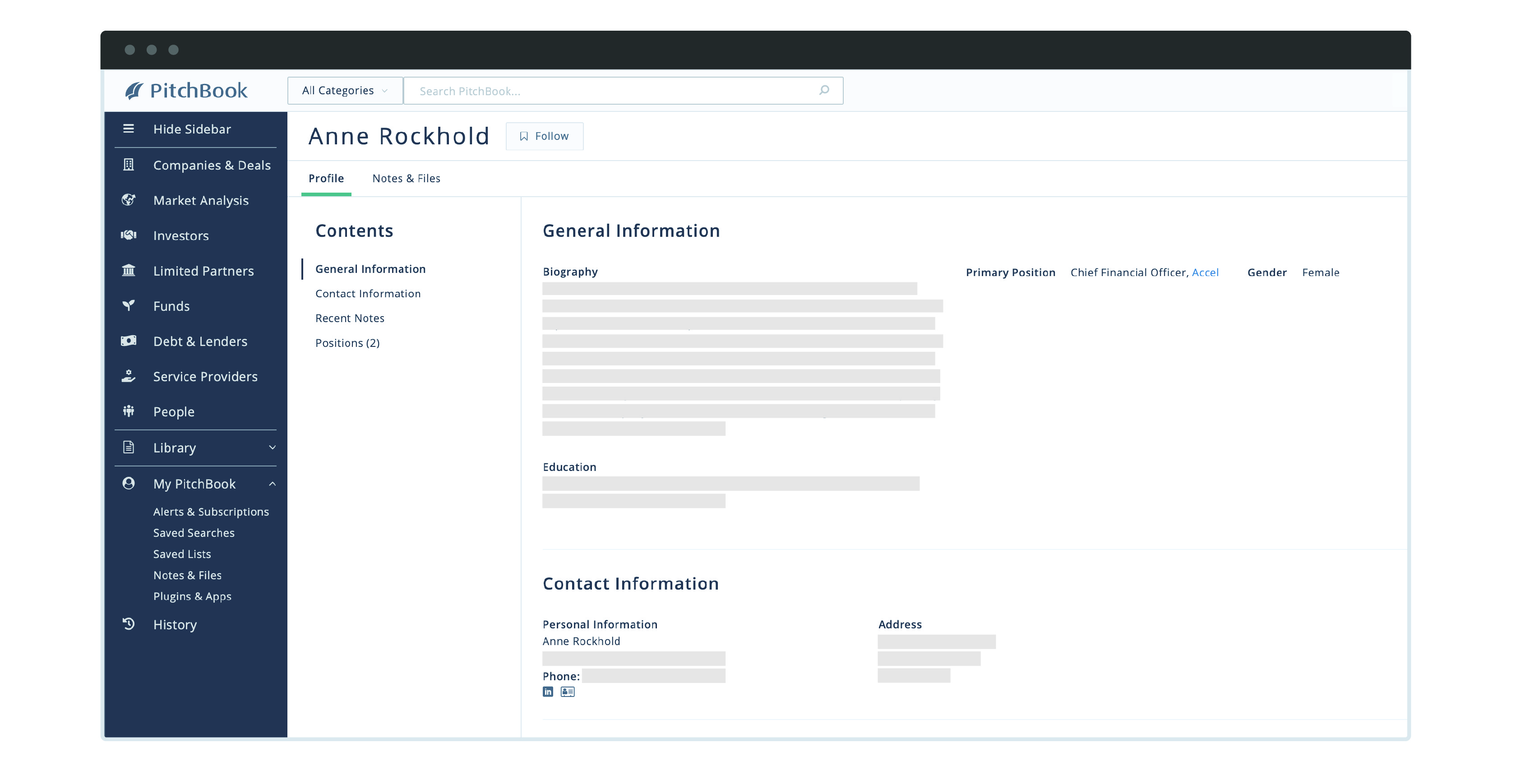Execute sell-side engagements faster: How to build a targeted buyers list
April 26, 2021
When it comes to finding the perfect buyer for your client, every detail matters—from financial sponsors' fund performance and investment preferences to their previous transactions and available capital. But how can you find promising targets when there are thousands of firms and funds to keep track of?
With the right data and tools, you can find strategic acquirers and financial sponsors based on the criteria that matter most to you and your client.
Below, we will show you how to create a buyers list using PitchBook.
1. Consider your client: What type of financial sponsor would be a good fit?
First, you will need to define aspects of your client's company. If your client is in the PE universe, you could emphasise buyout shops, for example, or incorporate venture capital firms, strategic acquirers and more. Targeting middle market financial sponsors? Set a minimum and maximum deal size to help limit your results. Plus, narrow your search even further using keywords, industries and verticals. By combining these functionalities and data sets, you are able to compile a list of potential buyers in minutes.
Say, for instance, that you represent a mid-sized healthcare technology company. With PitchBook, you can generate a highly curated list of active European-based financial sponsors with a preference for investing in healthcare, a history of buyouts involving similar-sized companies and recently closed funds with plenty of dry powder.
Or, evaluate a similar company’s path to exit. Who invested in or acquired it? Is that financial sponsor looking for additional similar transactions? If so, it might be a perfect match.

2. Dive in deeper: What else do you want to know about a potential buyer?
Now, you have a list of specific financial sponsors to target. Further narrow the results or quickly prep for an introductory conversation with comprehensive, hard-to-find data on each of those firms.
For example, you might want to see a financial sponsor's prior transactions, co-investors or lead partners on transactions. Or, you might want to evaluate how that financial sponsor priced and structured a similar transaction with in-depth data that highlights transaction size, valuation, debt financing, advisors and more.

3. Analyse: What do you need to know about the space as a whole?
You have quickly filtered through thousands of buyers, built a hyper-targeted list and done an extra layer of due diligence, researching each potential sponsor. Now what?
Get a high-level look at a specific industry vertical—in this case, healthcare. Analyse investment and exit activity within this space as well as valuation trends, transaction sizes, transaction multiples and more. Or, evaluate healthcare within the context of all private market activity and see how the public and private markets compare.

4. Reach out: How do you connect with these potential buyers?
Use up-to-date contact information—including direct email addresses and phone numbers—to connect with executives, fund managers or lead partners on specific transactions. Further, you can share and work together on buyers lists with other members of your firm using PitchBook’s collaborative features.

Spend less time tracking financial sponsors and more time focusing on what is important—executing engagements. With technology designed to help you work faster and data that is both comprehensive and granular, you can find the most promising buyers, identify the right financial sponsors, map the market and easily reach out to key people.
Explore PitchBook's data with a free trial
Already a PitchBook user? Log in.
Comments:
Thanks for commenting
Our team will review your remarks prior to publishing.
Please check back soon to see them live.